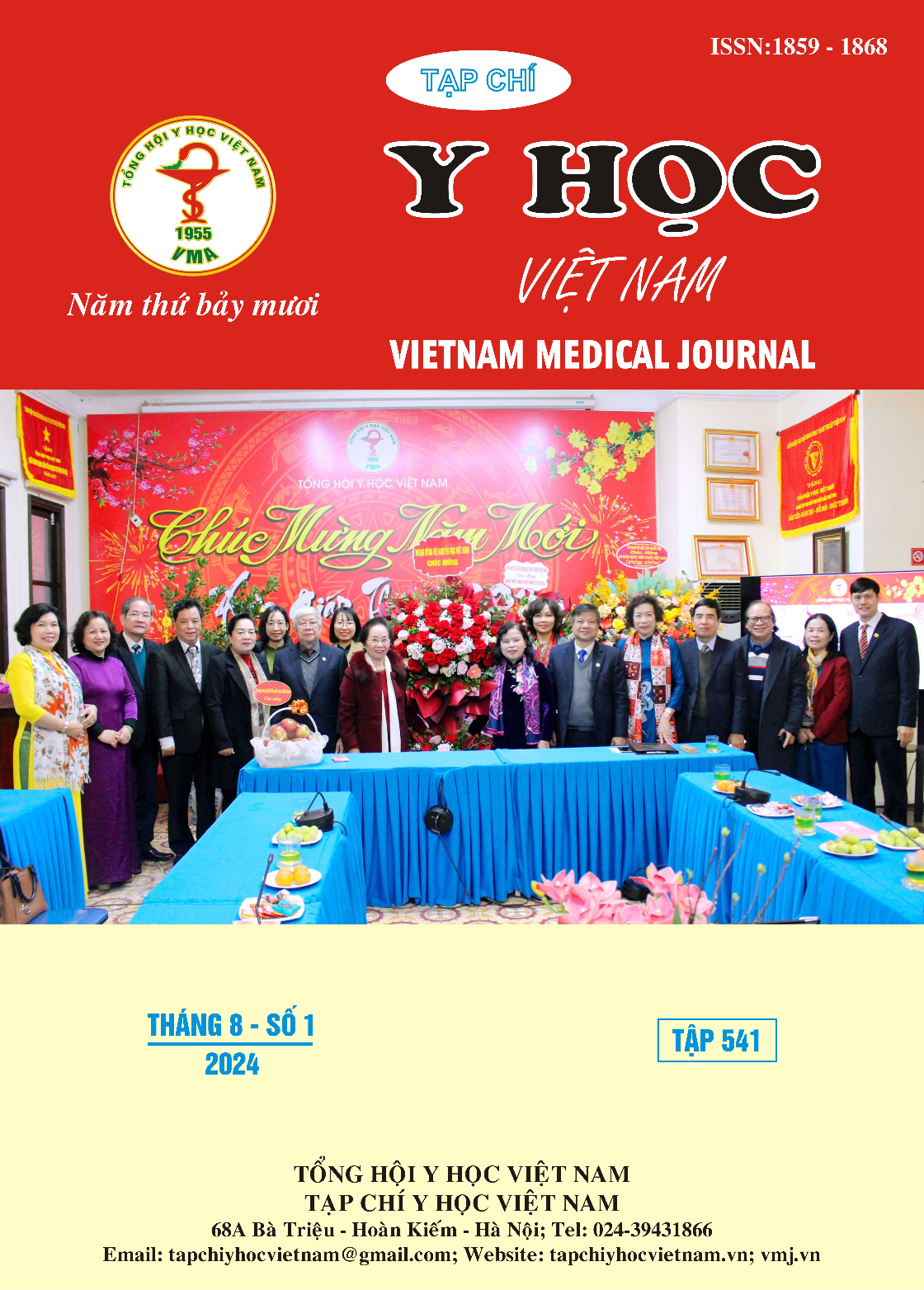EFFICACY AND SAFETY OF ROTATIONAL ATHERECTOMY TECHNIQUE IN HEAVILY CALCIFIED CORONARY ARTERY STENOSIS AT KIEN GIANG GENERAL HOSPITAL
Main Article Content
Abstract
Background: Heavy calcified coronary artery stenosis was challenging for interventional cardiologists performing percutaneous coronary intervention (PCI) optimizations and this affected the long-term outcome of patients. Objective: To evaluate the success of PCI procedure in heavily calcified coronary artery stenosis. This needed rotational atherectomy and it caused procedural complications. Materials and methods: A cross-sectional descriptive study on 42 patients with heavily calcified coronary artery diseases that underwent rotational atherectomy at Kien Giang General Hospital from January 2023 to April 2024. Results: average age was 72.7 years old, 52.4% of patients was male, 61.9% had stable angina, 7.2% had unstable angina, 7.2% had non ST elevation myocardial infarction and 9.5% had heart failure. Rotational atherectomy was performed in 90.5% of Left Anteroir Descending (LAD) and 31.3% of the calcified coronary artery diseases were classified by IVUS/OCT imaging. The most common burr diameter of rotational atherectomy was 1.25 mm in 85.7% of cases, but in 14.3% of cases, a burr diameter of 1.5mm was used. Procedural and clinical success was 100%. There were no complications such as coronary perforation or cardiac death. Entrapped burr only occurred in 2.4% of cases. Conclusion: 42 cases of heavily calcified coronory artery stenosis were performed with rotational atherectomy at Kien Giang general hospital. There was a high success rate and a low complication rate.
Article Details
Keywords
Coronary artery, IVUS, OCT, PCI, TIMI, Rotablator.
References
2. Bouisset Frédéric, Barbato Emanuele, Reczuch Krzysztof, Dobrzycki Slawomir, Meyer-Gessner Markus, et al. (2020), "Clinical outcomes of PCI with rotational atherectomy: the European multicentre Euro4C registry". EuroIntervention, 16 (4), pp. e305-e312.
3. Cao Jun, Cai Huaxiu, Liu Weibin, Zhu Hengqing, Cao Gang (2021), "Safety and effectiveness of coronary angiography or intervention through the distal radial access: a meta-analysis". Journal of Interventional Cardiology, 2021.
4. Dini Carlotta Sorini, Nardi Giulia, Ristalli Francesca, Mattesini Alessio, Hamiti Brunilda, et al. (2019), "Contemporary approach to heavily calcified coronary lesions". Interventional Cardiology Review, 14 (3), pp. 154.
5. Mintz Gary S (2015), "Intravascular imaging of coronary calcification and its clinical implications". JACC: Cardiovascular Imaging, 8 (4), pp. 461-471.
6. Sharma SK, Tomey MI, Teirstein PS, Kini AS, Reitman AB, et al., North American expert review of rotational atherectomy. Circ Cardiovasc Interv. 2019; 12 (5): e007448.
7. Yamamoto Takanobu, Yada Sawako, Matsuda Yuji, Otani Hirofumi, Yoshikawa Shunji, et al. (2019), "A novel rotablator technique (low-speed following high-speed rotational atherectomy) can achieve larger lumen gain: evaluation using optimal frequency domain imaging". Journal of interventional cardiology, 2019.


